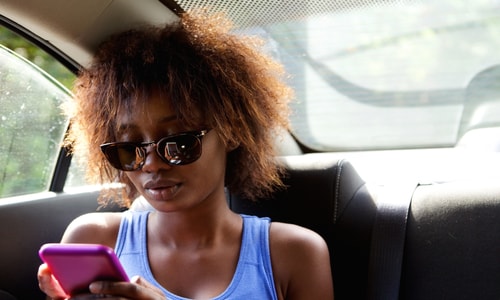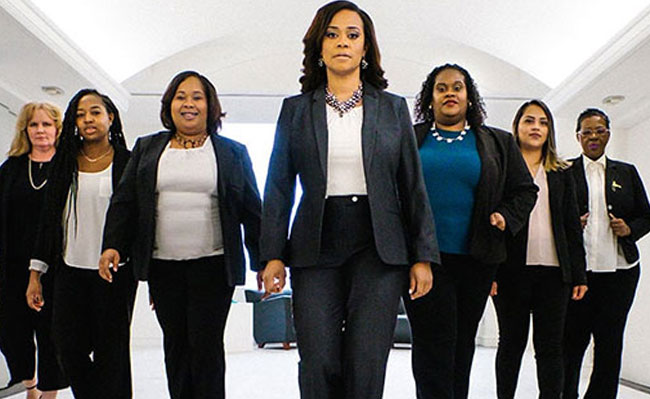
With rideshare services like Uber and Lyft becoming more and more popular, the question is being raised, “Who is responsible for installing car seats?” If you and your child decide to grab a ride in an Uber or Lyft vehicle, and your child needs a car seat, who is responsible for ensuring that they are properly restrained in the car? If you were driving a child in your own vehicle, you’d certainly be responsible for ensuring they were properly restrained, but since it’s not your vehicle, what does the law say?
Who Is Responsible for Rideshare Car Seats?
The answer to the above question is not likely what you are expecting. If you are the rideshare driver, you should probably be cautious transporting a young client based on Georgia laws. Georgia law states that children under the age of eight are required to ride in approved child restraint seating systems and the driver of the car shall provide such restraint to the child that is appropriate for the child’s weight and height. The only exceptions to the law are medical conditions that prevent the child from being properly restrained and school buses that are used to transport children over the age of four.
Rideshare Drivers and Car Seats
When it comes to rideshare services, Georgia defines these services as any entity or person that uses an internet or digital network to connect rideshare drivers to passengers for the purpose of transportation for donation or hire arrangement. This does not include corporate-sponsored vanpool as long as the service is not being operated to generate a profit.
Under current laws, the only types of passenger vehicles that are exempt from child restraint laws are public transit vehicles and taxi cabs. However, the law also states that rideshare services do not meet the qualifications of these vehicles and are therefore not exempt. This means rideshare services, such as Uber and Lyft, must follow all laws regarding child restraints.
Liability and Rideshare Car Seat Usage
If rideshare services are required to restrain minors in appropriate child restraints, does that mean they are liable if an accident occurs and the child wasn’t restrained? The answer is most likely yes. There may be a few exceptions based on a child’s size. Georgia law states that children over 4’9” tall may be transported without a child restraint system, however, they must still wear a seatbelt. Children that weigh at least 40 pounds can be restrained with only a lap belt if the vehicle doesn’t have a shoulder belt or if all shoulder belts in the vehicle are being used to restrain smaller children. Children must also be seated only in rear seats unless all rear seats are filled by other children, in which case the front seat may be used to restrain children in appropriate restraining systems.
Contact an Experienced Attorney Today
If you have questions about whether a child must be restrained in a rideshare vehicle or not, or if your child has been injured while being transported in a rideshare vehicle, the Atlanta Uber Accident attorneys at Council & Associates, LLC can help. Contact us today to schedule a consultation.
What should I do immediately after an Uber accident?
When you have been in an accident involving an Uber, do not wait to get medical attention, as an Uber accident lawyer can advise you. Call the police to report the incident and gather information from the driver, witnesses, and other involved parties. Document the scene, take pictures, and note license plate numbers. Contact Uber to report the accident and preserve ride details. Refrain from discussing fault or accepting blame. Reach out to an experienced Uber accident lawyer promptly to protect your rights and maximize your potential compensation. An attorney will guide you through the claims process, negotiate with insurance companies, and help you build a strong case to pursue the compensation you deserve.
Who is liable for my injuries in an Uber accident?
Determining who is liable in Uber accidents can be difficult. Multiple parties could be responsible, including the Uber driver, another negligent driver, or even the rideshare company itself. The driver’s personal insurance may apply if they had no passengers or were not on the app. If the driver was active on the app or had passengers, Uber’s liability insurance coverage might come into play. An experienced Uber accident lawyer can investigate the circumstances of the accident, review insurance policies, and determine liability. They will work to hold the appropriate parties accountable to ensure you receive fair compensation for your injuries and damages.
How much compensation can I expect after an Uber accident?
As an Uber accident lawyer can tell you about, compensation varies depending on factors such as the nature of injuries, lost wages, and how the accident has impacted your life. Each case is unique, and there is no fixed amount. An experienced Uber accident lawyer will assess the specific details of your case and work diligently to pursue the maximum compensation available. This may include medical costs, property damage, lost earnings, pain and suffering, and potentially more. Rest assured, your attorney’s goal is to secure a fair settlement or, if necessary, take the case to trial to fight for your rights.
Can I sue Uber directly for my injuries?
For some select and specific cases, it may be possible for victims to sue Uber. However, doing so can be complex and challenging, as Uber often seeks to avoid direct liability. Whether you can sue Uber directly or pursue other parties involved depends on the specific circumstances of the accident. Uber’s complex insurance coverage and legal arrangements can make the process more intricate. Consulting with a skilled Uber accident lawyer is crucial. They will navigate the legal complexities, evaluate your options, and determine the best course of action to hold all responsible parties accountable and seek appropriate compensation for your injuries.
What if the at-fault driver is uninsured or underinsured?
If the at-fault driver in an Uber accident is uninsured or underinsured, you may face challenges in obtaining fair compensation for your injuries. However, you still have options. If the Uber driver was actively transporting a passenger or on the app, Uber’s uninsured/underinsured motorist coverage could apply. This coverage is designed to protect passengers and injured parties in such situations. An experienced Uber accident lawyer will explore all available avenues to pursue compensation, including accessing this coverage if applicable. They will also help you understand your own insurance policies and explore additional options to ensure you receive the compensation you deserve. Find out how you can get legal help after an accident by contacting a seasoned Uber accident lawyer from Council & Associates, LLC right away.


